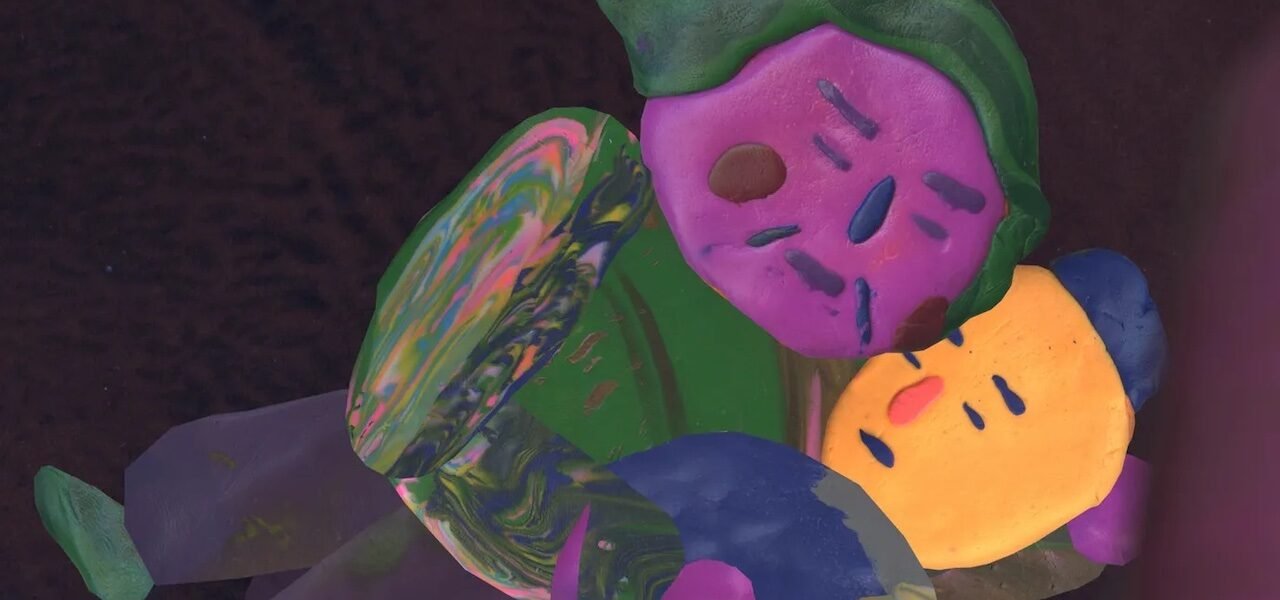'Silver Bird and Rainbow Fish' Review: A Family Portrait So Personal It Forgets About the Viewer [OIAF 2022]
using experimental animation, filmmaker lei lei documents his family history and their lives during the chinese cultural revolution.
For the avid documentary watcher, the idea of using film to tell a personal story is not unfamiliar. Some filmmakers use the medium to tell a story of another, while some use it to explore their own history or showcase their family story. Filmmaker Lei Lei uses Silver Bird and Rainbow Fish to document his family’s history in Ningdu during the tumultuous times of 1960s China. He takes a multimedia approach to storytelling, making use of not only animation but photographs, newspapers, and voice clips.
Lei Lei is an experimental artist, and has created multiple other shorts and feature length films. In 2010, his short film This is LOVE was shown at the Ottawa International Animation Festival. He’s won multiple awards for his creations, and with Silver Bird and Rainbow Fish being only his third feature, there is likely much more to come from him.
Some self-focused documentaries market themselves to a larger audience with the intention of sharing and allowing others to relate to them. An example of this is Flee, the Academy Award nominated animated documentary that told the story of an Afghanistan-born refugee and his struggles to find safety and himself. Silver Bird and Rainbow Fish doesn’t bother with this. This film is for Lei, and for Lei’s family. As a viewer, depending on your personal history, you may be able to relate to some aspects, but that is a secondary goal of this film – Lei is learning his own familial history and documenting it not for others but for his own.
The film majorly focuses on Lei’s father’s childhood through both family events and China’s Cultural Revolution. If unfamiliar, this period in China resulted in a lot of struggling for people across the country, including violence and imprisonment, re-education and forced labour, and the destruction of both the economy and cultural material. Lei’s grandfather was re-educated and kept away from his family even in times of tragedy. Without going into details about this family’s experience, from a privileged perspective, what they went through is unbelievable. To be able to talk about it so openly, and share things that must have had everlasting impacts, is a feat in itself. For Lei to learn this must be so difficult. The creation of film could have been very therapeutic for him, but must have had its challenges.
The animation is very interesting, with the choice to use 2D Claymation, sometimes overlapped with photographs. There are many family photos shown throughout the film, and often, the faces are covered with Lei’s clay take on who they are. The viewer is shown the process of the formation of the faces of Lei’s family, and as new characters are introduced to the story, they receive a colourful clay face.
At one point in the film, Lei asks one of his family members if his clay depiction of his father’s stepmother is accurate, and the brutal honesty in the response brings a smile to a viewer’s face. Lei is told no, not really – she was much prettier than that. Lei takes it in stride, and doesn’t change the face that was designed, but keeping that voice clip in, letting the audience know how his interpretation differs from those that experienced it. Art is personal, subjective to the individual’s perspective, and that doesn’t make it any less true, or accurate, or real.
As the filmmaker himself has not lived through the experiences he is exploring, he depends entirely on the word of his father and grandfather. Both tell their stories, and the stories of other loved ones – sisters, mothers, wives. Lei has set up a recorder to document everything his father and grandfather say, and it is presented unfiltered. The viewer can hear the prompts, the follow-up questions, and the raw responses of these individuals. This is freeing for the subjects, and likely for Lei as his family member’s voices are put on a platform, but can be challenging for the viewer to follow. Quiet, mumbling voices describing simple things struggle to capture one’s attention.
The artistic value of this film is undeniably high, but as previously mentioned, this was not created with the entertainment of an audience in mind. Lei is talented, and his style is incredibly intimate. The viewer almost feels like they are intruding, and due to the technique used in this type of filmmaking, it can be difficult to devote undivided concentration. This is a personal portrayal of a family’s memories through stories and photographs, and it is undeniably beautiful, but a little too slow and quiet at times. The experimental nature of this film sometimes enhances its emotional connection to the viewer, while at other times, it hinders it.
For viewers that love to challenge themselves with artistic films, this would be a great watch. Experimental film can be difficult for some, but it can offer a lot of value through emotion and expression for both filmmaker and viewer.



